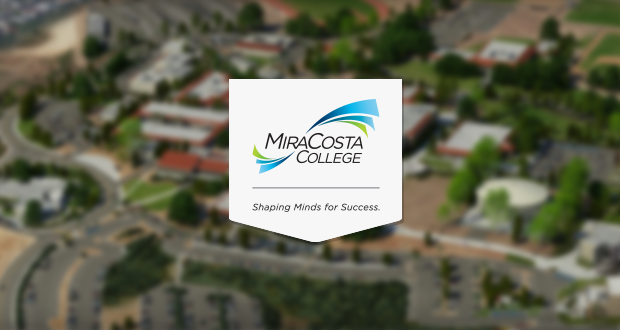MiraCosta College is taking sustainability to a new level.
Oceanside CA— From installing “cool roofs” that reflect heat from the sun and lessen the demand for air conditioning, to utilizing a computer-controlled centralized irrigation system that measures moisture in the air before activating any sprinklers, to completely shutting down heating and air conditioning systems during school breaks, MiraCosta College is saving energy, saving water, and saving money while doing its part to save the planet.
The district recently took its efforts a step further with the addition of a new energy conservation program manager who began working from the Oceanside Campus in mid-December. Madeleine Falco is working with the college through a district contract with Cenergistic, an energy conservation consulting firm whose clients include K-12 systems and community colleges across the country.
“MiraCosta College has had a long-standing record in sustainability and going green, whether it’s through water conservation, recycling, or becoming more energy efficient,” said Tom Macias, MiraCosta College’s director of facilities. “We are proud of the efforts we’ve taken, and we’re committed to being a leader in this area.”
Macias, who chairs the college’s Sustainability Advisory Committee, plays a critical role in helping the college reach its goal of becoming carbon-neutral by 2050 and sending zero waste to area landfills. MiraCosta College diverted 832 tons of solid waste from area landfills as far back as 2003 and 1,090 tons – or 70 percent of all solid waste produced – in 2007. Today, almost all waste is recycled or repurposed.
The MiraCosta Community College District’s Strategic Plan states that among its institutional objectives is to “integrate sustainability into the college environment, culture, and experience, and extend outreach into the communities we serve.” And from 2002 through 2008, the district saved $243,000 on its utility bills by reducing its energy usage by nearly 1.7 million kilowatt hours and reducing its natural gas usage by nearly 37,000 therms. What’s more, the savings resulted in some $375,000 in SDG&E conservation incentive rebates.
During the recent 10-day, annual winter break shutdown, the district exceeded all expectations and consumed 25 percent less energy than in 2014 for a savings of approximately $17,000 by turning off all chillers, heating and air conditioning systems, and unplugging all computers, office mini fridges and more.
“You’ll hear a lot of people saying, `It’s just a mini fridge, what difference does it make?’” said Falco. “But how many mini fridges are on campus? Twenty? Thirty? Fifty? That’s a lot of energy your wasting when nobody’s even around.”
Falco makes the same point about computers, which use about 4 cents of electricity daily on average. “That may not seem like much, but how many computers are there throughout the district? Over a 10-day period, the savings adds up.”
More savings are on the way. Proposition 39, also known as the California Clean Energy Jobs Act, recently funded $378,000 for new LED lighting in every district parking lot and roadway, $240,000 for retrofitting three chillers to operate more energy efficient that provide the district’s air conditioning and cooling systems for the Theater, Concert Hall and Creative Arts buildings, and $100,000 for a new freezer and refrigerator at the Oceanside Campus cafeteria.
MiraCosta College, meanwhile, offers courses in lean manufacturing – the systematic method for eliminating waste within a manufacturing system – at its Technology Career Institute in Carlsbad, and Solar PV Installation at the Landes Recreation Center in Oceanside.
“There has been a cultural shift to where people realize conservation and sustainability is just the right thing to do, and we take our role seriously,” said Macias.



